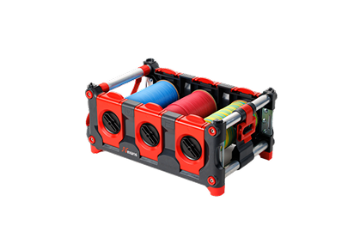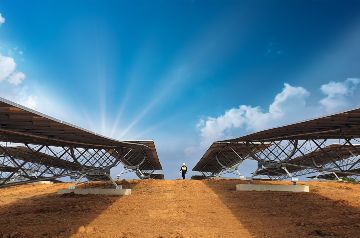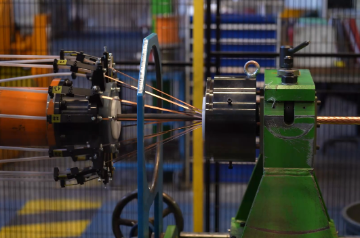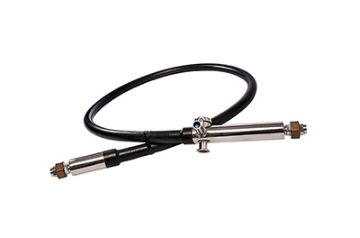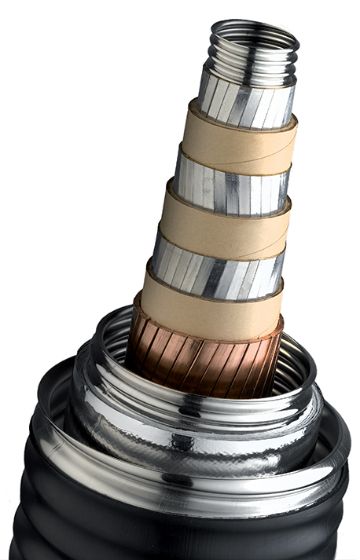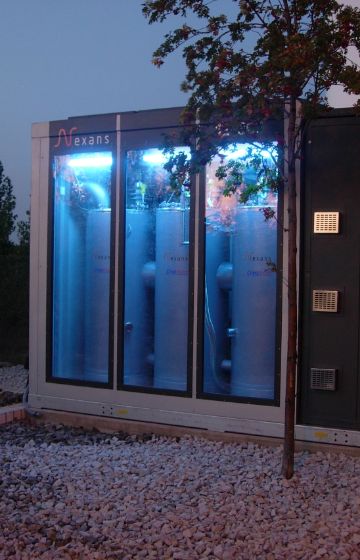- Markets
- Products
- Services
- News
- Tools & Resources
- About Nexans
- Search
- Contact us
- Compare
- Sign in
Boost the capacity and resilience of distribution networks
An aging and inadequate power grid is widely seen as one of the greatest obstacles to the restructuring of power markets in the United States, Europe and elsewhere. Utilities face several converging pressures: steady load growth, unplanned additions of new generation capacity, rising reliability requirements, sharp price volatility resulting from new competitive forces and stringent barriers to siting new facilities, particularly extra high voltage equipment.
Proposals for conventional grid expansion are facing persistent challenges, just as it is becoming apparent that industry reform cannot succeed without renewed grid investment, new transmission, and distribution capacity. Consequently, new technologies that can increase the electrical capacity and flexibility of this vital network attract increased attention. Adapting power networks is essential to cater for new sources of consumption – including electric vehicles, heat pumps, electric heating and industrial processes – as well as accommodating power flows from distributed generation.
Furthermore, there is a pressing need to boost the resilience of electricity supplies. In an all-electric future, fossil fuels will no longer provide a fallback. Distribution grids will need to be more resilient than ever. Downtime is not an option.
increase in the demand for electricity by 2030 (source: International Energy Agency)
of grids required by 2040
power capacity from wind and solar by 2045
Upgrading city power supplies
DSOs are under pressure from all directions. Right now, the number-one challenge is safeguarding supplies for millions of homes and businesses. Looking ahead, the pressure to upgrade networks will resume. The difference is that the economy is likely to be tighter – and DSOs will need to justify every penny they invest.
The next decade is likely to see a big rise in urban electricity consumption. One reason for this is the shift to low-carbon technologies, such as electric vehicles and heat pumps. Demographic changes also point to higher consumption as the trend towards smaller households accelerates. Long term, the electrification of domestic heating will add to the burden on DSO networks.
Electrical infrastructure and especially cable investment has always been a challenge. It could be even more challenging in the post crisis period.
Rising demand presents DSOs with some big challenges. Higher loads accelerate cable ageing and higher currents amplify circuit losses, wasting energy. To make things worse, unconstrained use of low-carbon technologies could lead to even higher peak demand.
Key challenges lie ahead of Distribution System Operators
Distribution System Operators (DSOs) are having to strike a new balance between maintenance and upgrades, at least for now. Yet the fundamental challenges – such as ageing assets and new patterns of demand – will still be there when the crisis subsides. How can DSOs make the best investment decisions in this challenging environment?
#1. Dealing with ageing assets
#2. Permitting and acquisitions, space-constraints
Challenges of power distribution networks
#1. Dealing with ageing assets
In mature economies – including western Europe, North America and Japan – this is a growing concern. Assets can be replaced, refurbished or maintained – but which? How do you make the best investment decisions? As demand rises, so does the pressure to upgrade power networks. But for DSOs in densely-populated urban areas, upgrading networks is not easy.
Cable networks in some urban areas are more than 50 years old and capacity is limited. Adding new loads accelerates the cable ageing process, making replacement essential if extra demand is to be accommodated. Plus, where do you run new cables? Routing is a problem – particularly if there are other cables in situ, along with telecoms, water and gas. Meanwhile, widening an existing cable route is not always possible. This can impose a finite limit on transmission capacity.
#2. Permitting, acquisitions and space-constraints
Environmental restrictions, lane rental charges and traffic management fees – plus land purchases – can add hundreds of thousands to the cost of a job. The wider the cable route, the bigger the bill. deploying new conventional cables is a lengthy and expensive process in terms of obtaining consents and carrying out construction work. It can also be disruptive and unpopular with the public.
Conventional cabling needs a lot of space (including space between cables) because factors such as heating and electromagnetic interference must be taken into account. On top of this, there is often a need to build new substations, which is expensive in cities.
#3. Cost and disruption
Deploying new conventional cables is a lengthy and expensive process in terms of obtaining consents and carrying out construction work. It can also be disruptive and unpopular with the public. Citizens are increasingly resistant to public works that cause noise and congestion. Mitigation is vital, but this adds to costs and means that projects take longer. Moreover, electricity shall be delivered reliably, meaning no cuts, breakdowns, cascading failures or blackouts, and without frequency variations or quality fluctuations. This means
- Reduce equipment failure and decrease the quantity and duration of faults and outages. Safety implies quickly spotting overheating to prevent lines from sagging onto trees, or freezing rain which can lead to ice accretion and power failure.
- Discourage energy theft, a major threat to infrastructure, service and profitability.
- Fully control substation operations
#4. Supporting the growth of decentralised power generation
Everything from small-scale rooftop solar to utility-scale wind and photovoltaic farms. One of the major problems for DSOs is that thermal and voltage constraints on their networks impose a limit on how much new generation can be connected. Reinforcement is needed so new generation resources can be added. How do you decide where and when to invest?
To respond to growing demand and provide uninterrupted power to customers, networks need to accommodate energy from any source, including minigrids, photovoltaic rooftop arrays, fuel cells, or windparks. Centralized generation and control need to give way to distributed generation and intelligence so that power can be exchanged on the open commodity market.
#5. Handling new demand in a sustainable manner
Electric vehicle charging is the main driver. This ranges from domestic AC charge points for a single vehicle (typically less than 3kW) right up to large public charging facilities offering super-rapid DC charging at up to 350kW.
Grid reinforcement is needed to handle these additional loads. This will involve not only new cables to charge points, but also extra transformer capacity and upgraded cables and overhead lines to those transformers. How do you justify the case for extra investment? Can you easily explain to stakeholders why investment is needed? Vehicle charging is only one part of the story. New domestic systems – such as ground and air source heat pumps – will also add to loads. And in the long term, power demand will grow even more as governments mandate electricity as the main energy source for household heating, replacing gas and oil.
Moreover, because customers are environmentally sensitive, they need to be reassured that buried and overhead lines are safe, and generate minimum losses and CO2, with low Electro-magnetic Interference (EMI).
- Networks should allow interaction with electric vehicles, clean energy generation, and user-friendly consumption for customers.
- When networks are upgraded, obsolescent cables must be removed with no damage to urban areas or natural habitats, and materials recycled safely and efficiently.
Unlocking the potential of superconducting systems
Superconducting cable systems have a critical role to play in addressing these challenges.
Distribution system operators need cost-effective and non-disruptive ways to upgrade city power supplies.
As well as being highly energy efficient and reliable, superconducting systems are less disruptive to install and require much less space than conventional cables and overhead lines. Moreover, their capacity to transmit power is enormous: a single cable can handle more than 3 GW – enough to power a large city.
Moreover superconducting systems are more cost-effective and therefore easier to deploy than conventional copper and aluminium cabling – particularly in urban power grids. Savings are achieved through minimal land take and a reduced need for electrical infrastructure such as substations and transformers.
Superconducting cable systems are not just theoretical – they are now a reality. Leading grid operators already rely on superconducting cable systems for resilient, cost-effective electricity distribution.

-
Smaller footprint – corridors for superconductors are up to ten times narrower than those for conventional cables and lines. This not only saves money, but also minimises disruption and dramatically accelerates the deployment of new infrastructure.
-
Trenches not tunnels – cables do not require special infrastructure and they can be run just about anywhere, without the need for dedicated tunnels
-
Fewer substations – superconductors make it possible to transmit electricity at lower voltages, but with the same power. So instead of supplying electricity at 400 kV through copper, you can use 132 kV superconductors instead. Equally, conventional 132 kV cabling can be replaced by 33 kV superconductors. Bringing power into cities at a lower voltage reduces the need for step down transformers – a big saving in land acquisition and civil works costs.
-
Go-anywhere cables – superconducting cables do not generate a magnetic field, so you can run them safely alongside other electrical cables, telecoms infrastructure and even pipe networks.
-
Energy savings – superconductors offer almost no electrical resistance. This means transmission losses are minimal, particularly at 33 kV AC.
-
Resilient grids – aside from boosting the power of urban grids, superconducting systems have the potential to enhance the reliability of electricity supplies – for example, by linking multiple urban substations on a superconducting loop to create an urban bus bar.
-
Power without limits – there is no length limitation with superconducting cable systems. This makes them the perfect solution for both citywide distribution and nationwide transmission.
_reduced.jpg/jcr:content/AmpaCity-(2)_reduced.jpg)
Superconductivity is currently advancing industrial applications, offering significant potential to transform critical infrastructure. Distribution system operators (DSOs) need a way to satisfy the ever-growing demand for energy in cities and transport networks.
HTS cables are designed to meet that demand.
Applications
Recent projects clearly highlight the potential and opportunities of superconducting systems - So far, superconducting cables have been successfully operated in the electricity grid for several years, for example:
- AmpaCity: optimizing the German city grid: Nexans manufactured and deployed both the superconducting cable system and superconducting fault current limiter. AmpaCity was the world’s longest superconducting cable link and was in operation for seven years.
- ComEd: Protecting Chicago's power grid: The Chicago REG project, which went live in 2022, involved the deployment of a new superconducting cable system to link nearby substations. Nexans designed, manufactured and installed a superconducting cable, which uses high temperature superconducting (HTS) wire made by American Superconductor (AMSC).
Protection & power conditioning
Protection and Power Conditioning: enhancing resilience with superconducting fault current limiters
Superconducting cables carry electricity at exceptionally high currents, reliably and with minimal losses. That makes them an attractive option for meeting the fast-growing power needs of smart cities. However, superconducting properties can also be used to stop current dead in its tracks, almost instantaneously. Superconductor fault current limiter (SFCL) can provide vital protection against the increasing threat of fault currents.
Increasing fault currents caused by short circuits are an inherent risk in smart cities. They result from factors such as higher loads, more distributed generation, and more complex load flows. The consequence is that the safety rating of transformers and switchgear in distribution networks may be exceeded. Without suitable protection, vital infrastructure can be damaged, causing outages with consequent impact on business and society.
Superconductor fault current limiter (SFCL) are based on high temperature superconductor (HTS) material that is cooled to its operating temperature of -200°C by liquid nitrogen, a fluid that is both readily available and cost effective.
More information about superconductivity:

- Improved network reliability and safety: In normal operation, the SFCL allows current to flow easily and with no losses. But should a fault current start to flow, the superconductor heats up above its critical temperature and it transitions from a perfect conductor to having a very high resistance. The transition takes place in less than 2 milliseconds (ms). The fault current is limited immediately, protecting equipment such as transformers, switchgears and busbars on the same circuit.
- Grid efficiency : SFCLs do not need to be replaced or reset after use. As soon as the fault current is cleared and the superconductor is cooled back down, SFCLs can return to operation, which makes them ideal in case of frequent fault currents or for installation in hard to access parts of the network.
- Optimized infrastructures: The SFCL can be deployed to protect critical parts of the network infrastructure in smart cities where it offers a very cost-efficient way of stabilizing and optimizing grids as power demand increases
SFCLs offer a smart, scalable solution that supports 24/7 reliability, self-healing electrical infrastructure and reduced maintenance requirements.
In short, integrating superconducting fault current limiters into the power networks provides a modern, automated approach to protection and conditioning—aligning with the needs of next-generation, resilient energy networks.
More information about superconductivity:
Upgrading future distribution networks
Boosting the capacity and resilience of urban grids
Superconductivity is currently advancing industrial applications, offering significant potential to transform distribution networks. By incorporating superconducting cables and fault current limiters, the energy sector can attain exceptional levels of efficiency, capacity, and sustainability.
Nexans HTS cables are designed to meet that demand.
- Reducing grid losses and eliminate EMF: despite the enormous currents they carry, HTS cables do not get hot and they do not produce electromagnetic fields. This makes them the ideal choice in tunnels and sensitive environments.
- Enhancing distribution networks infrastructures - do more with medium voltage by increasing the current rather than the voltage - and optimizing grid efficiency (by reducing capital equipment).
- Supporting compact, modular, and resilient infrastructure design - our HTS cables are highly compact. This makes them ideal in situations where there is a need to increase power transfer capacity within constrained rights of way in city centres.
All these programs and the history of Nexans position the company today as a global leader in superconducting cables for electrical grids. This makes Nexans the first European and global industrial player to possess the technology ready to meet all the needs of transmission networks operators. In other words, for HV, MV, and LV cables, Nexans is currently the only manufacturer worldwide capable of meeting all these needs, while offering solutions to meet the rise in global energy demand and increased trasmission capacities on electrical networks.
More about Nexans High Temperature Superconducting (HTS) Solutions:
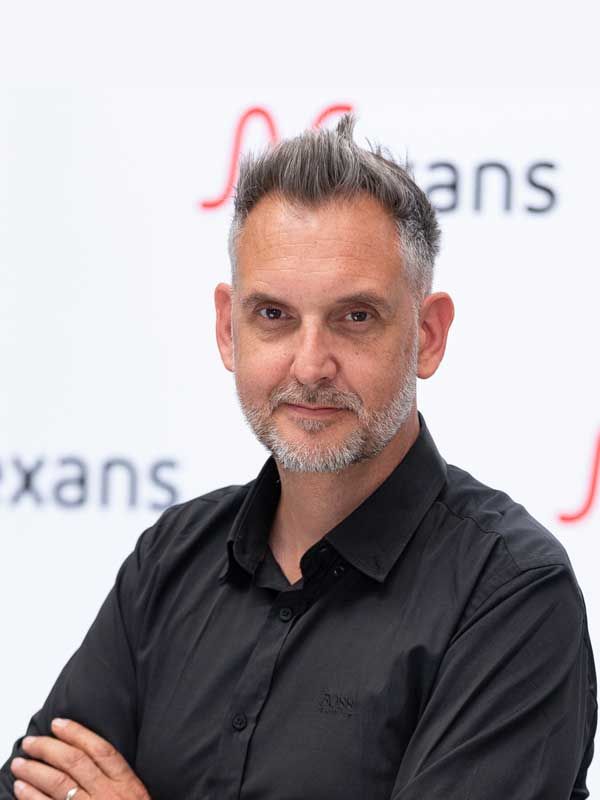
Our websites
Select your country to find our products and solutions
-
Africa
- Africa
- Ghana
- Ivory Coast
- Morocco
- North West Africa
- Americas
- Asia
- Europe
- Oceania
